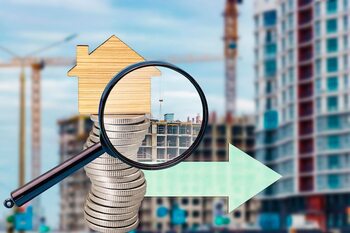Redefining value-added: the role of accessibility in emerging neighborhoods

Redefining added value: the role of accessibility in emerging neighborhoods Added value has taken on a new meaning in the real estate sector, especially in emerging neighborhoods where accessibility becomes a key factor. In this article, we will explore how connectivity and infrastructure influence property value and how these new spaces are transforming our investment outlook. As urban developments expand, understanding the relationship between accessibility and added value is essential to seize market opportunities.
1. The connection between infrastructure and real estate value
Infrastructure is one of the fundamental pillars that determines real estate value in any area. In emerging neighborhoods, the presence of good road connections, efficient public transport, and accessible basic services directly translates into higher property value. Buyers and renters are looking for not only a property but also the convenience of living close to schools, hospitals, and shopping centers. Thus, the quality of the infrastructure can significantly enhance the appeal of a neighborhood, making it a desirable place to live and invest.
Furthermore, proper urban planning that includes well-designed public spaces and green areas also plays a crucial role in increasing property values. When residents perceive that a neighborhood has infrastructure designed for their well-being and quality of life, they are more willing to pay higher prices for homes there. Therefore, the interconnection between accessibility and infrastructure not only benefits current homeowners but also lays the groundwork for future investments and sustainable development in these emerging communities.
2. Emerging neighborhoods: a safe investment
Investment in emerging neighborhoods has established itself as one of the most promising strategies for those looking to maximize the value of their assets. These spaces, which may have previously been considered peripheral or unattractive, have begun to thrive thanks to improvements in accessibility and infrastructure. The arrival of new transportation routes, shopping centers, and basic services not only transforms the urban landscape but also increases demand for properties in these areas. This creates a virtuous cycle where appreciation becomes a tangible reality for investors.
Moreover, the trend towards remote work and the shift in housing preferences have led many people to reconsider their place of residence. Emerging neighborhoods often offer more affordable properties without sacrificing quality of life or access to essential services. This combination makes these places particularly attractive to young professionals and families seeking a dynamic and accessible environment. Thus, investing in these areas is seen not only as a smart financial move but also as a step towards more inclusive and sustainable communities that are redefining what it means to live well.
3. Public transportation: catalyst for urban development
Public transportation acts as a catalyst for urban development, improving connectivity and facilitating access to essential services. In emerging neighborhoods, having efficient transportation infrastructure not only reduces travel times but also attracts new residents and businesses. This creates a multiplier effect in the local economy, where improvements in transportation enhance the quality of life and foster an environment conducive to real estate growth. Proximity to subway stations, bus stops, or trams translates into higher demand for properties, thus increasing their value.
Additionally, investment in public transportation is often accompanied by other urban improvements, such as green spaces, shops, and community services. These elements create an attractive environment for living and working, which in turn drives the revitalization of previously neglected areas. As developers recognize the potential of these emerging neighborhoods with good access to public transportation, a virtuous cycle is triggered: more investments lead to more infrastructure and better services, further increasing the added value. Therefore, understanding how public transportation influences urban development is essential for those interested in maximizing their investment opportunities in this new real estate landscape.
4. Public spaces and their influence on the increase in value
Public spaces play a crucial role in defining the added value in emerging neighborhoods. The quality and design of these places can radically transform the perception that residents and potential buyers have of an area. Parks, plazas, and recreational areas not only provide opportunities for social interaction, but also improve the quality of life by offering spaces for outdoor activities, attracting families and young professionals. As more well-designed public spaces are developed, interest in the surrounding properties is likely to increase, thereby raising their value.
Additionally, these spaces contribute to creating a sense of community and belonging, which are fundamental elements for the sustainable development of any neighborhood. When an area has access to services like public transport, local shops, and cultural activities in its public spaces, it becomes a more attractive place to live. This not only drives real estate demand but also fosters a vibrant local economy. Consequently, developers and investors should consider these aspects when assessing the potential for appreciation in emerging neighborhoods; investing in public infrastructure can be as valuable as the properties themselves.
5. Digital accessibility: a new standard of living
Digital accessibility has emerged as an essential component in shaping emerging neighborhoods, becoming a new standard of living. In an increasingly interconnected world, the availability of high-speed internet and digital infrastructures not only facilitates remote work and access to online services but also fosters a more integrated and active community. Residents with robust digital connections can access job, educational, and recreational opportunities from the comfort of their homes, enhancing the neighborhood's appeal to new tenants and investors.
Additionally, digital accessibility directly influences the perceived value of a property. Neighborhoods that offer robust connectivity tend to be more valued in the real estate market, as buyers consider this aspect fundamental when making decisions. The integration of smart technologies and digital platforms also allows for better community management and more efficient access to public services. Thus, spaces that prioritize digital accessibility become not only desirable places to live but also strategic investments that can increase their appreciation over time.
6. Success stories: neighborhoods that have grown thanks to accessibility
The transformation of neighborhoods through accessibility is a palpable phenomenon in various cities around the world. An emblematic case can be found in the neighborhood of Williamsburg, in New York, where the recent expansion of the subway and the creation of public spaces have revitalized the area. Once considered an industrial zone, it has now become a vibrant place with a mix of culture and commerce. The improvement in transportation has attracted new residents and entrepreneurs, thus increasing property values and fostering a dynamic environment that benefits both old and new inhabitants.
Another notable example is the neighborhood of La Latina in Madrid, which has experienced a significant boom thanks to its improved accessibility. With the implementation of bike lanes and safer pedestrian routes, this historic district has seen its local cafes and shops thrive by attracting both tourists and residents. The proximity to metro and bus stations has also made it easier for young professionals to choose to move there, increasing not only real estate demand but also creating a diverse and enriched social fabric. These cases illustrate how accessibility not only redefines economic value but also transforms entire communities, making them more inclusive and vibrant.
7. Future of surplus value: trends to consider
As emerging neighborhoods continue to grow and evolve, the future of property value presents itself full of opportunities and challenges. Accessibility, in all its forms, remains a decisive factor influencing property valuation. Current trends point towards an increase in demand for spaces that offer a combination of efficient transportation, nearby services, and pedestrian-friendly environments. This transformation not only affects housing prices but also redefines what it means to live well in a community. Quality of life thus becomes a fundamental pillar for assessing investment potential. On the other hand, sustainable development is gaining prominence as a crucial element in real estate valuation. Today's buyers are increasingly interested in properties that are not only accessible but also designed with environmental awareness. This includes everything from buildings with eco-certifications to public spaces that promote social interaction and community well-being. In this context, those investors and developers who can anticipate these trends will be better positioned to capitalize on the growth of the real estate market in emerging neighborhoods. The property value of the future will depend on both physical infrastructure and a commitment to development that respects the environment and social needs.



